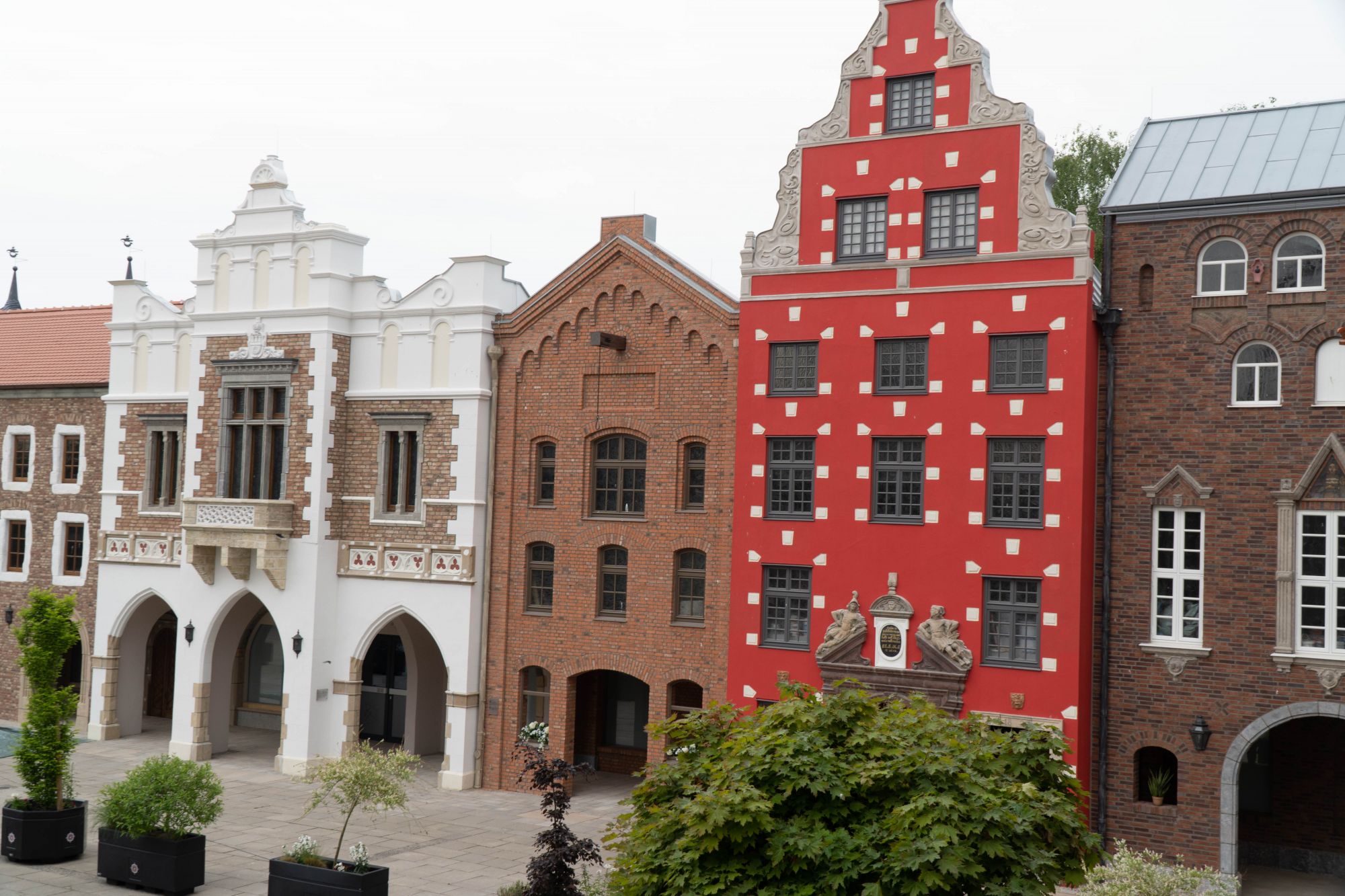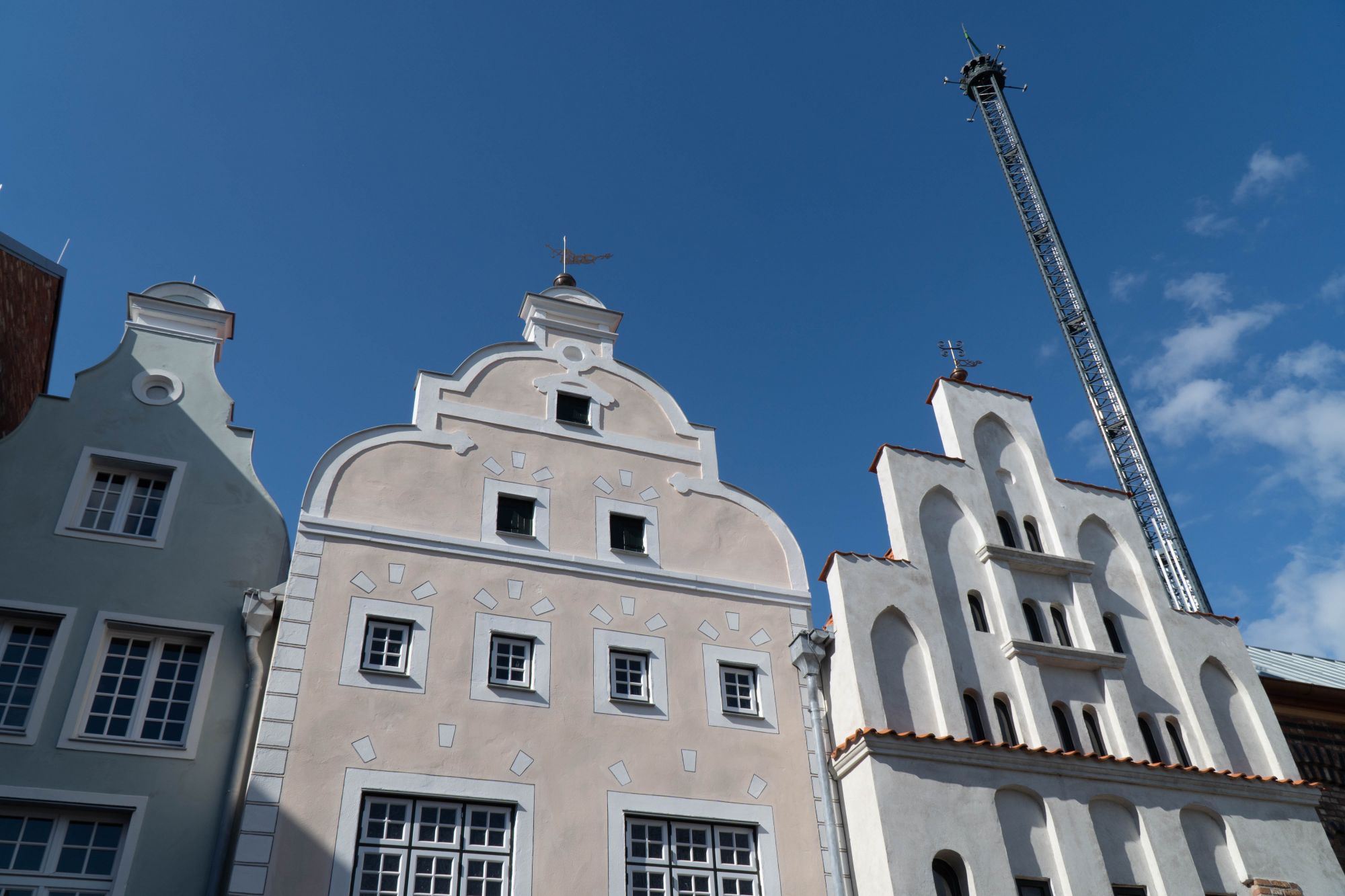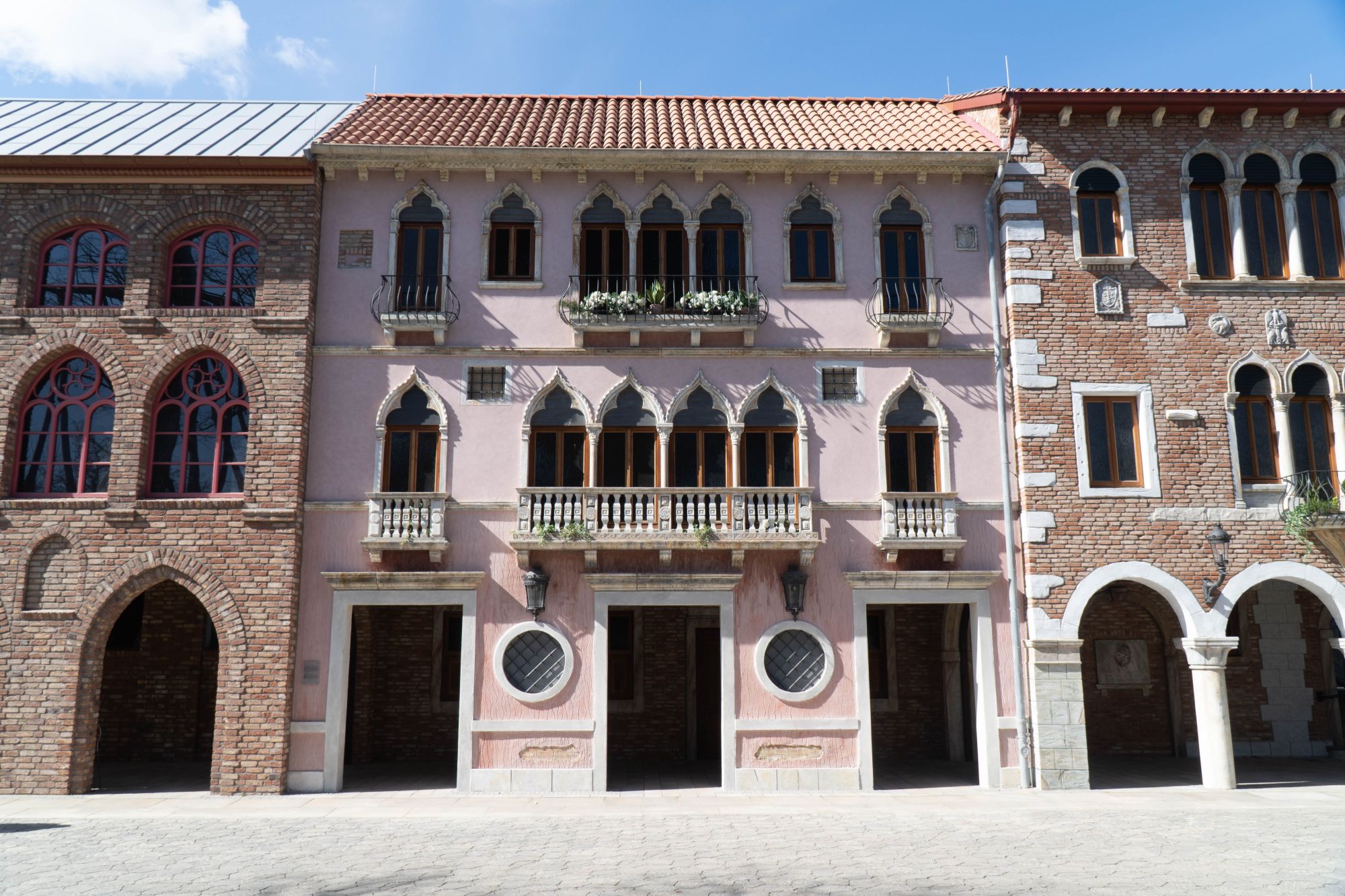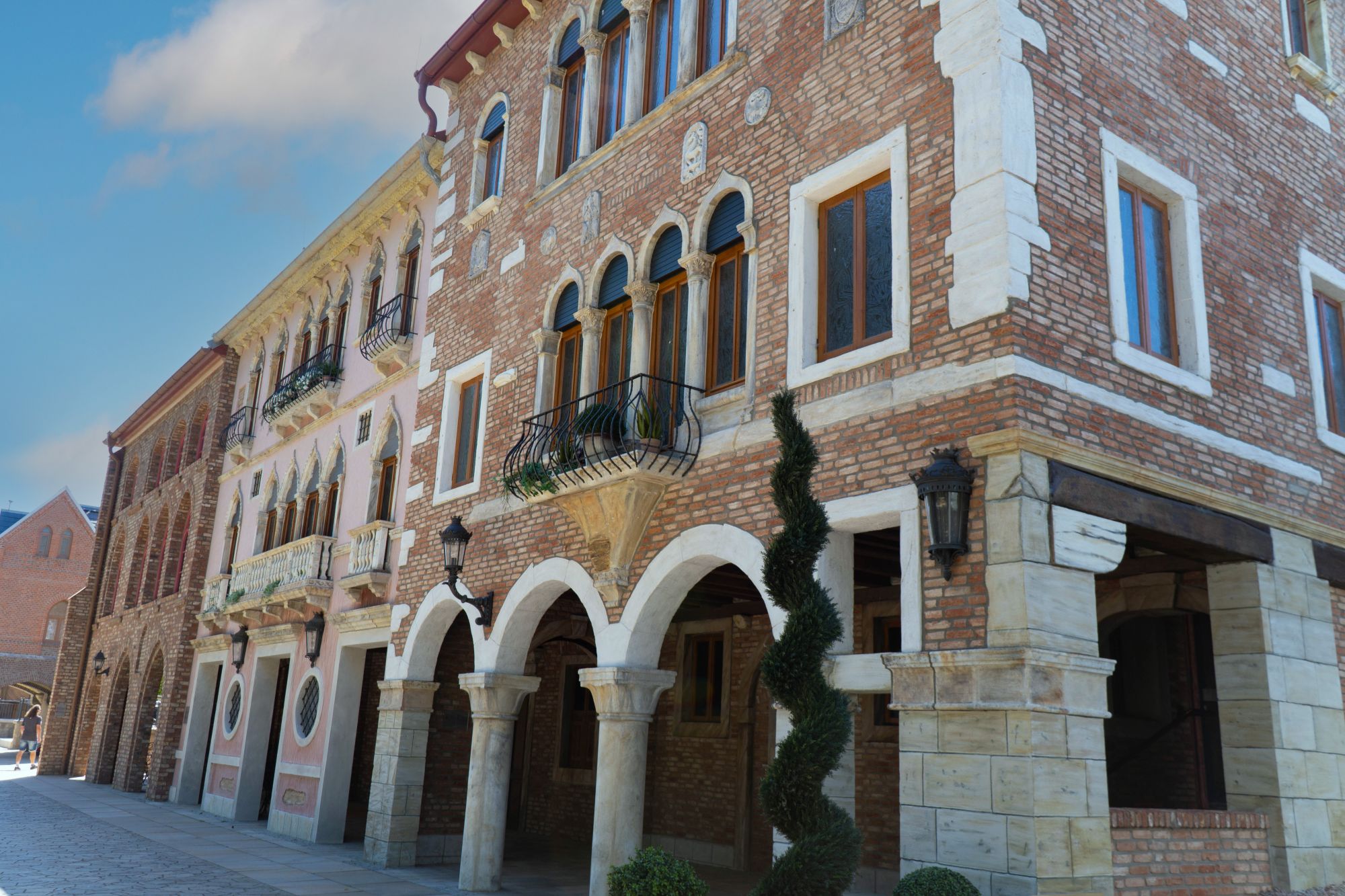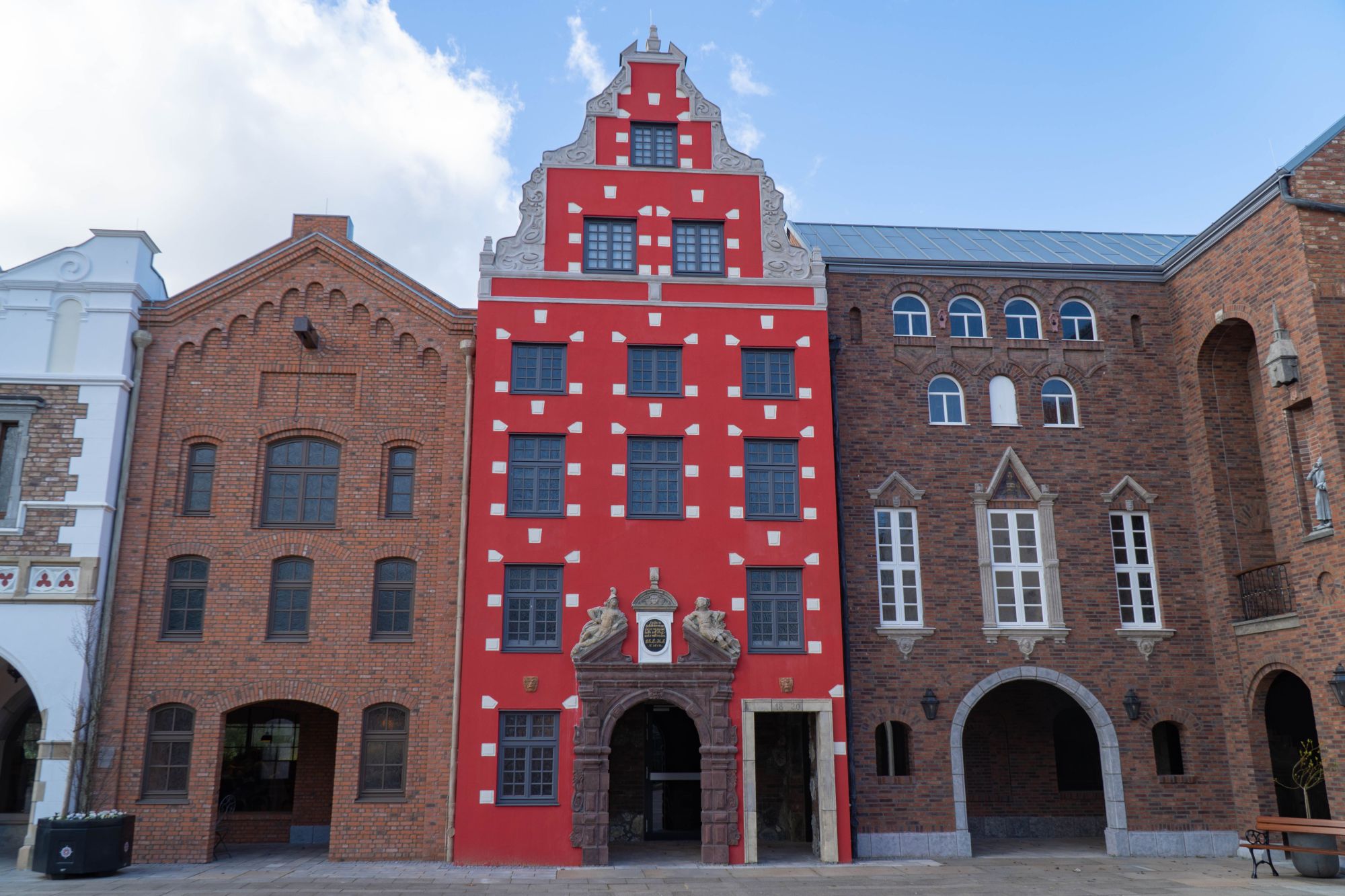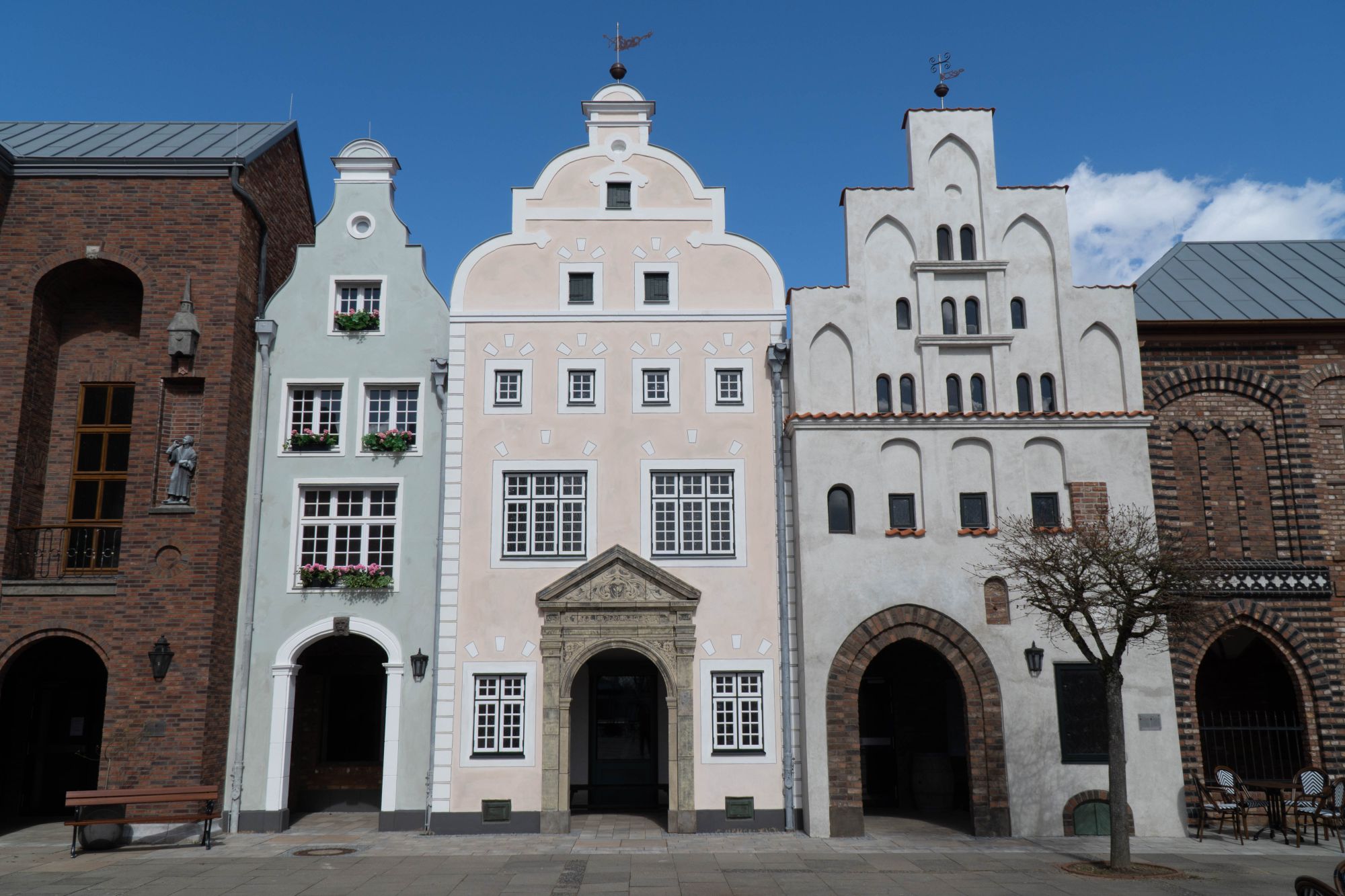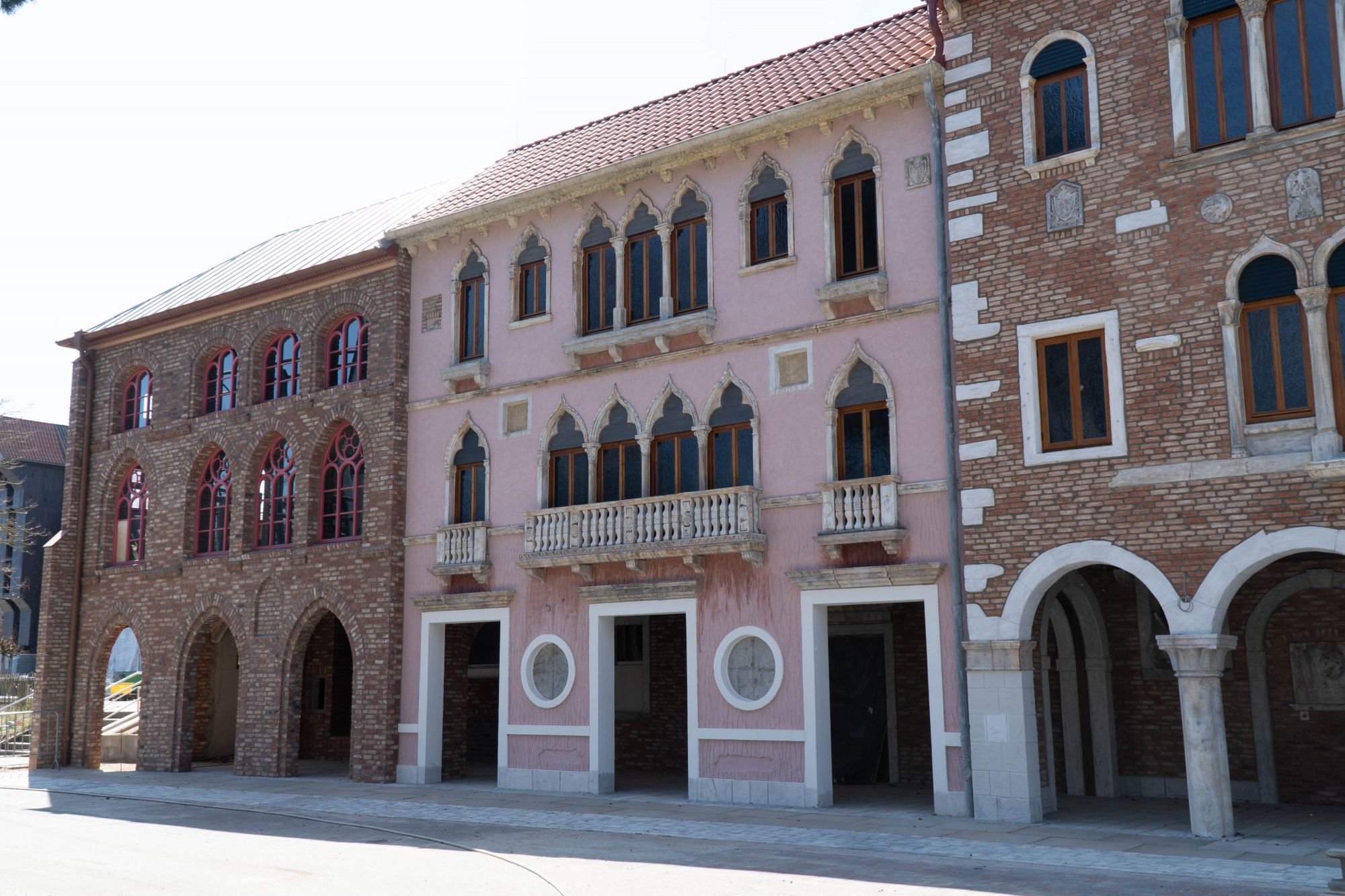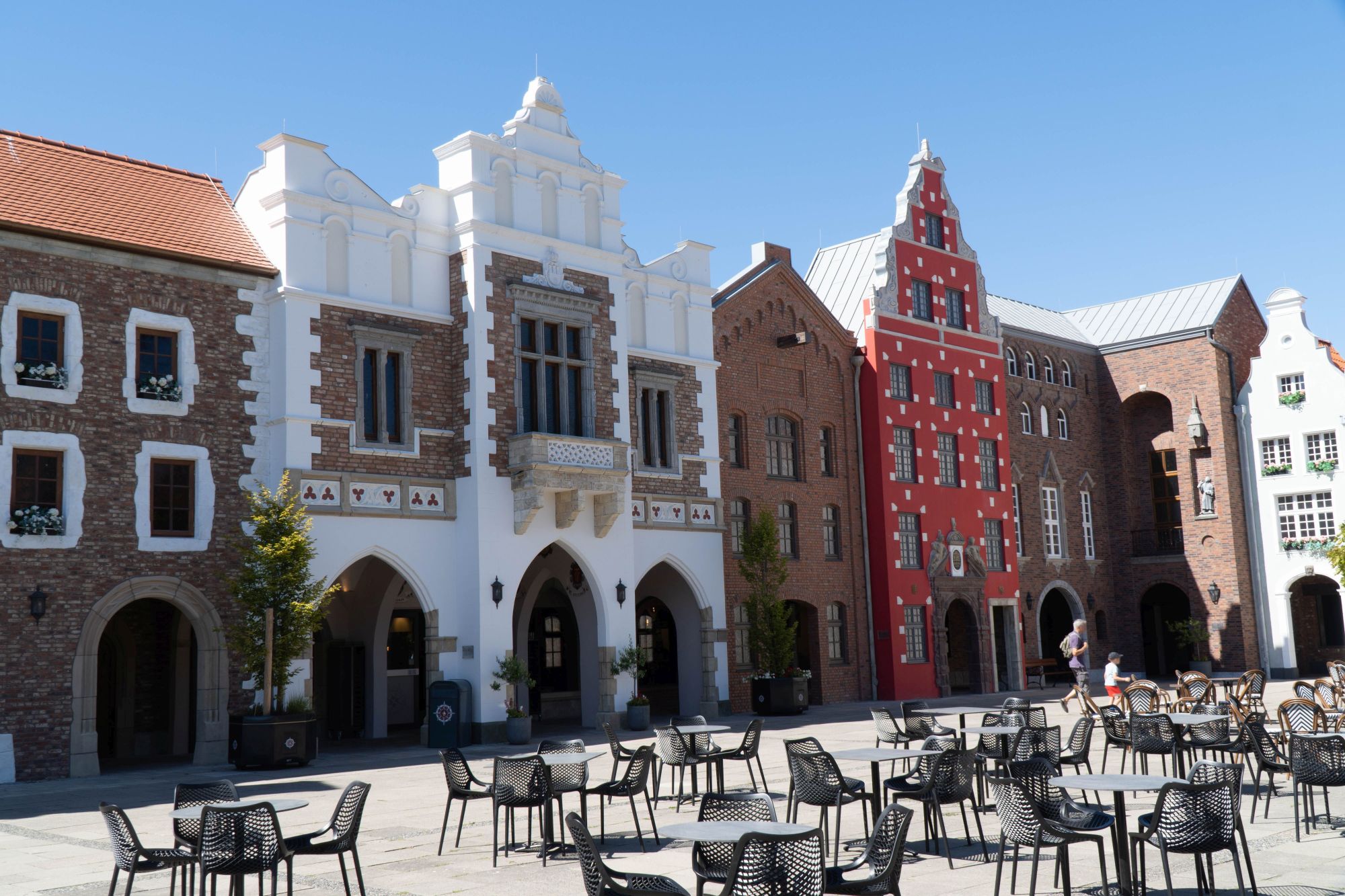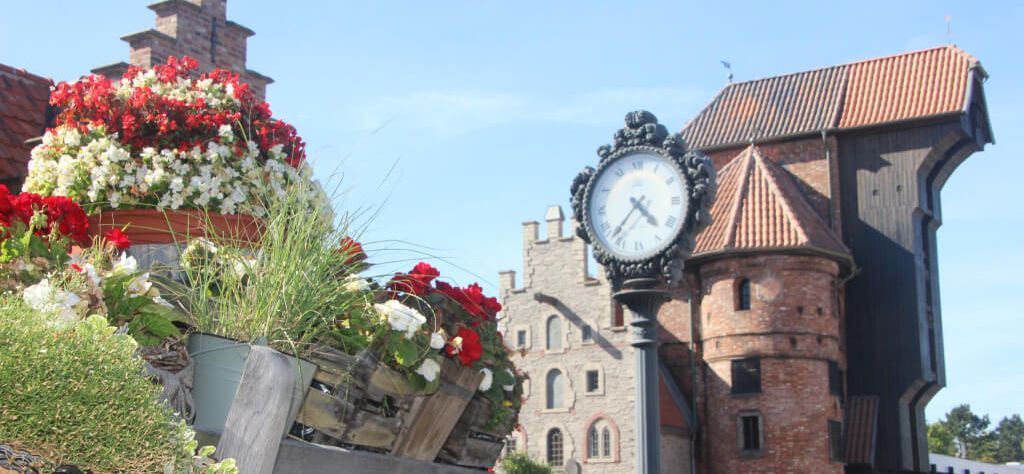
2021: Construction phase VIII
Kraków, Stockholm, Stralsund, Helsinki, Riga and Venice
In time for the 2021 season the HANSEATIC LEAGUE theme world was extended by the largest section to date. The eighth construction phase saw 14 different façades from Kraków, Stockholm, Stralsund, Helsinki, Riga and Venice take shape, all built in traditional, high-quality craftsmanship with HANSA-PARK’s customary love of detail. The new section stretches from Danzig almost all the way to the Fondaco dei Tedeschi.
Kraków joined the Hanseatic League at the end of the 14th century under the rule of Jogaila (Władysław II Jagiełło). Situated on the banks of the Vistula River, the city was a strategic point on the east-west trade route back then. Among others, merchants in Kraków traded wood and grains, and market sellers in Kraków offered cloths and silk. Kraków left the Hanseatic League in 1478.
Stockholm became a member of the city alliance in the mid 14th century. During the Hanseatic League times it was Sweden’s most important port for exports of, for instance, copper and iron. Soap and jewellery were imported through the port.
The German Hanseatic city of Stralsund was one of the early members of the Hanseatic League. In 1293 Stralsund formed an alliance with Lübeck, Rostock, Greifswald and Wismar. The alliance agreement was the stepping stone for the Hanseatic League of Cities (Städtehanse). Shipping and long-distance trade made Stralsund one of the key Hanseatic cities in the southern Baltic Sea area and brought the city prosperity.
Helsinki was originally founded on the River Vantaa in 1550 to be a rival to the Hanseatic city of Reval (today known as Tallinn) on the opposite river bank. A few years later Reval became a dominion of Sweden, and Helsinki no longer needed to be located on the river mouth. In 1640 it was relocated to where the city centre still is today.
The Hanseatic city of Riga joined the Hanseatic League in 1282 and was one of the richest east-European port cities. As an intermediary between Russia and western Europe, it was a trading hub for wax and furs as well as salt and wine. Riga still is an active member of the modern Hanseatic alliance.
Venice, which today forms part of Italy, became one of the major trading cities in the Mediterranean area during the times of the Hanseatic League and used to be a hub between the East and the West. Back then, the city was influenced by the Hanseatic League; many Hanseatic merchants had branch offices there. On the one hand, luxury goods such as silk, spices and furs from the Orient were bought in Venice and resold to the North. On the other hand, Venetians were also active in the trading of their own coveted products such as oil and salt.
Be a part of the ongoing development and watch the theme world’s buildings, reconstructed down to the very last detail using the best traditional craftsmanship, symbolise our name "HANSA-PARK" a bit more every year.




